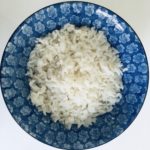The symptoms of celiac disease or gluten intolerance can be different in each person, which can make it difficult to diagnose. A person can have intestinal symptoms, or non-intestinal symptoms, or both. To provide an example of how celiac disease can affect one person, I have listed the symptoms I experienced before going on a gluten free diet. Also listed are reported intestinal and non-intestinal symptoms, and some of the conditions that have been associated with celiac disease or gluten-sensitivity.
My symptoms before a gluten-free diet:
- unexplained, severe anemia, leading to a bone marrow test
- gas and bloating, generally uncomfortable feeling all the time, eventually becoming debilitating stomach pains a while after eating a meal
- burping a lot, to try and make my stomach feel better
- diarrhea at times, which I believed was the result of a lactose intolerance or rich food or “something” I ate
- nausea at night sometimes and restlessness
- severe muscle cramps in the calves, quads, feet, hands and neck that occurred usually at night or while playing sports
- aching in my leg bones
- feeling sleepy — sometimes I would feel like falling asleep in the middle of the afternoon (once I fell asleep sitting up at my desk at work!)
- feeling mentally fuzzy at times (they call this brain fog)
- feeling physically tired and short of breath at times — for example, after walking up a flight of stairs, but could still run 5 miles
- intense ice cravings — I craved and crunched ice in the mornings and at night (this is associated with low iron)
- feeling overwhelmingly hungry if I did not eat, resulting in extreme irritability (we called it “going to the dark side”)
- being cold all the time
- chronic yeast infections
- dehydration — I was very thirsty a lot and had very dry skin
- feeling dizzy if I stood up too fast and sometimes seeing blinding white spots in front of my eyes (especially in high altitude when skiing)
- anxiety and obsessive compulsive tendencies
- mood swings and feeling edgy
- asthma (I was on medication since I was little)
- vitiligo (a skin condition I had as a child)
- weak cracking fingernails that grew downward
- bruising easily
- elevated liver enzymes (LFTs)
- knee joint pain, sometimes when running, always when sitting too long on an airplane or movie theater
- sharp pains in the tips of my fingers and toes
- decline in vision and problems with night vision
Intestinal symptoms of celiac disease and gluten sensitivity*:
- Abdominal pain
- Abdominal distention, bloating, gas, indigestion
- Constipation
- Decreased appetite (may also be increased or unchanged)
- Diarrhea, chronic or occasional
- Lactose intolerance (common upon diagnosis; usually resolves following treatment)
- Nausea and vomiting
- Stools that float, are foul smelling, bloody, or “fattyâ€
- Weight loss, unexplained (although people can be overweight or of normal weight upon diagnosis)
Non-intestinal symptoms of celiac disease and gluten sensitivity*:
- Anemia (low blood count)
- Anxiety
- Bone and joint pain
- Bone disease (osteoporosis, kyphoscholiosis, fracture)
- “Brain fog”, lack of concentration, short-term memory loss
- Breathlessness (due to anemia)
- Bruising easily
- Dental enamel defects and discoloration
- Depression
- Fatigue
- Hair loss
- Hypoglycemia (low blood sugar)
- Irritability and behavioral changes
- Malnutrition
- Migraine headaches
- Moodiness
- Mouth ulcers
- Muscle cramps
- Nosebleed
- Sleep disorders
- Seizures
- Short stature, unexplained
- Skin disorders (dermatitis herpetiformis)
- Swelling, general or abdominal
- Vitamin or mineral deficiency, single or multiple nutrient (for example, iron, folate, vitamin K)
- Vision problems
Symptoms of celiac disease and gluten sensitivity in babies and kids:
- Failure to thrive: a child is behind in physical growth or size or doesn’t gain enough weight.
- Gastroesophageal Reflux Disease(GERD): symptoms include pain, irritability, crying (constant or sudden) after eating, frequent spitting up or vomiting after eating, vomiting more than 1 hour after eating, regular spitting up, inability to sleep soundly, “wet burp” or “wet hiccup” sounds, poor weight gain or weight loss
- Loose stools or constipation or alternating between the two
- Foul-smelling stools
- Not wanting to eat
- Bloated belly and gas
- Skin rashes
- Irritability
Diseases and conditions associated with celiac disease and gluten sensitivity:
- Addison’s Disease
- AIDS
- Asthma
- Anemia
- Attention Deficit Disorder (ADD)
- Autism
- Autoimmune liver disease
- Autoimmune thyroid disease
- Chronic diarrhea of unknown origin
- Lactose intolerance
- Dermatitis herpetiformis (a burning, itching, blistering rash), and other skin disorders
- Type 1 diabetes
- Thyroid disease
- Down’s Syndrome
- Gastroesophageal reflux disease (GERD)
- Hepatitis C
- Idiopathic pulmonary fibrosis
- Inflammatory bowel disease (IBD)
- Irritable bowel syndrome (IBS)
- Microscopic colitis
- Unexplained infertility
- Miscarriage
- Osteoporosis or osteopenia
- Certain types of intestinal cancer and Non-Hodgkin’s lymphoma
- Peripheral neuropathy
- Restless Leg Syndrome
- Sjogren’s syndrome
- Neurological conditions, including ataxia and schizophrenia
- Autoimmune disorders such as rheumatoid arthritis and sytemic lupus erythematosus
If you have any of the above symptoms or conditions, ask your doctor about testing for celiac disease or gluten sensitivity.
*List from the U.S. National Library of Medicine of the National Institutes of Health website.






what people are talking about